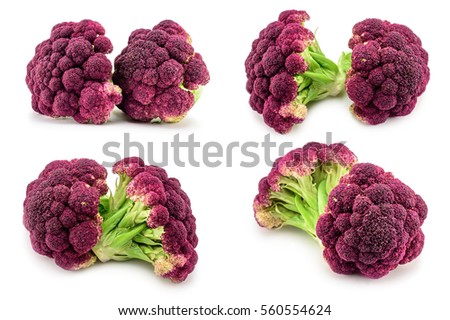Common pests that like to attack cauliflower include:
• Cabbage root fly: Eggs are laid at the base of the seedling and the subsequent maggots burrow down and eat the roots. Symptoms include wilt, interrupted growth and a bluish tint to the leaves. The best way to avoid them is to use a micromesh row cover to prevent the flies from laying eggs on the plant.
Make sure the netting is properly sealed all-around the plant. Alternatively, use cabbage collars, which cover the soil around the base of the plant. Another alternative is to introduce more nematodes into your garden, as they feast on the cabbage root fly's larvae.
• Cabbage white caterpillars: These caterpillars will kill your cauliflower plant within days, so look for yellow eggs underneath the leaves, and if you find them, simply brush them off. A row cover will prevent the butterfly from laying its eggs as well.
• Cabbage whitefly: While this aphid is less destructive than other pests, they can cause your plant to mold. Check the underside of the leaves and pick off any white insects. Also remove any leaves that turn yellow as they could harbor aphid eggs. The sticky substance left by the whitefly can be safely washed off with a strong blast of water.
• Clubroot: Clubroot cysts can survive in soil for up to nine years, so if your garden ever gets infested, know your efforts to grow cauliflower or any other cabbage family member may be thwarted for some time. Typically, clubroot will be introduced via infected transplants or by tracking in infected soil from another area.
Symptoms include, poor growth and leaves that wilt and turn reddish-purple. The roots will have foul-smelling swollen deformed growths attached to them. Advanced infestation will cause the roots to dissolve into a slimy pulp.
To minimize spread, burn the affected roots; do not use them in compost. If you know you have an infestation, add lime to the soil the year before you're planning to plant any cabbage family variety as clubroot thrives in acidic soil conditions. Using a raised bed can minimize the risk as well by preventing over-wetting.
Facts Credit: mercola.com
• Cabbage root fly: Eggs are laid at the base of the seedling and the subsequent maggots burrow down and eat the roots. Symptoms include wilt, interrupted growth and a bluish tint to the leaves. The best way to avoid them is to use a micromesh row cover to prevent the flies from laying eggs on the plant.
Make sure the netting is properly sealed all-around the plant. Alternatively, use cabbage collars, which cover the soil around the base of the plant. Another alternative is to introduce more nematodes into your garden, as they feast on the cabbage root fly's larvae.
• Cabbage white caterpillars: These caterpillars will kill your cauliflower plant within days, so look for yellow eggs underneath the leaves, and if you find them, simply brush them off. A row cover will prevent the butterfly from laying its eggs as well.
• Cabbage whitefly: While this aphid is less destructive than other pests, they can cause your plant to mold. Check the underside of the leaves and pick off any white insects. Also remove any leaves that turn yellow as they could harbor aphid eggs. The sticky substance left by the whitefly can be safely washed off with a strong blast of water.
• Clubroot: Clubroot cysts can survive in soil for up to nine years, so if your garden ever gets infested, know your efforts to grow cauliflower or any other cabbage family member may be thwarted for some time. Typically, clubroot will be introduced via infected transplants or by tracking in infected soil from another area.
Symptoms include, poor growth and leaves that wilt and turn reddish-purple. The roots will have foul-smelling swollen deformed growths attached to them. Advanced infestation will cause the roots to dissolve into a slimy pulp.
To minimize spread, burn the affected roots; do not use them in compost. If you know you have an infestation, add lime to the soil the year before you're planning to plant any cabbage family variety as clubroot thrives in acidic soil conditions. Using a raised bed can minimize the risk as well by preventing over-wetting.
Facts Credit: mercola.com




